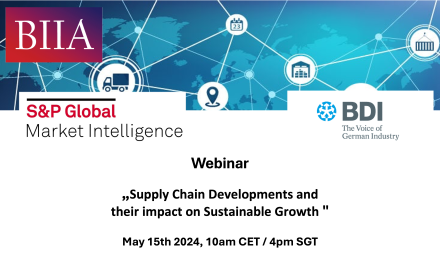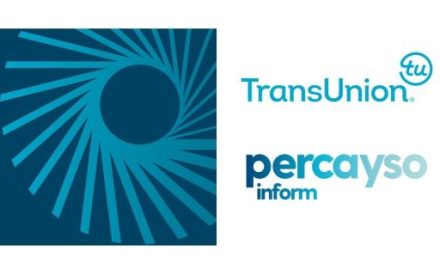Credit Connect’s hosted its sixth Online Lending Technology Think Tank last week which saw lending strategies and the future of the sector discussed by eight leading professionals from a variety of lending sectors.
The event was attended by over a hundred lending professionals from banks, credit card providers building societies, loan providers, credit unions and fintechs were among the viewers across four sessions.
The themes of credit risk, affordability digital lending and open banking were discussed by panellists and Chair Chris Warburton from ROStrategy The insights from the event were recorded and now can be viewed by clicking on this link.
 Commenting on the event host Colin White Founding Director at Credit Connect said “It was great to see such a great mix of lending professionals take part in the industry panel discussions supported by the viewer interactions.
Commenting on the event host Colin White Founding Director at Credit Connect said “It was great to see such a great mix of lending professionals take part in the industry panel discussions supported by the viewer interactions.
“I look forward to continuing the conversation at the next virtual and in-person events across this year.”
Chris Warburton Director and RO Strategy and Event Chair said “Once again it was great to be able to chair the Lending Technology Think Tank. A couple of interesting new ideas and discussion this time around.
 “Risk appetite, not changing yet, but there is opportunity for growth by looking at the data, and new data, in detail. Also is it okay to assume the same level of government intervention we have had for the last few years and how do we balance good outcomes and privacy if we now know what the funds are likely to be used for?
“Risk appetite, not changing yet, but there is opportunity for growth by looking at the data, and new data, in detail. Also is it okay to assume the same level of government intervention we have had for the last few years and how do we balance good outcomes and privacy if we now know what the funds are likely to be used for?
“Open Banking is clearly gaining trust and as a result being more widely adopted. This is a data source that can be effectively used to find additional value, and sustainably lend within the risk appetite and paving a way for more personalised and flexible products, already. Thanks to the panellists and all the Credit Connect team for another thought provoking event.”
Event Questions round-up
Responses to selected questions:
- Is fraud a threat to lending decisioning?
Eleanor Demuth from Curve said: “Fraud is certainly something that should be accounted for in credit decisioning and not just fraud but financial abuse too. my recommendation would always be to model for it separately though else you risk a heap of fraud hiding in your bad debt which then further weakens pure credit decisions.”
- Does AI or ML have a place in helping to shape risk modelling?
Eleanor Demuth from Curve said: “AL and and machine learning certainly have a place, particularly in affordability analysis and ongoing portfolio management.”
Selected Event Poll Results
With all the different finance/lending/credit options consumers have today, do you feel a traditional bureau score still provides enough insight into a consumers overall financial exposure to assess credit risk accurately?
- Yes 6%
- Not sure what else is available 12%
- No 82%
If alternative credit data was used to to provide a broader view of consumers to help you make fairer, more informed credit risk decisions, and onboard more customers successfully, do you think this would add value to your business?
- Yes 90%
- I’d be interested to test 5%
- No 5%
Does your organisation plan on exploring the use of alternative credit data in the next two years?
- Current project ongoing 46%
- Project starting in next 3 months 8%
- Project planned 2024 23%
- No 23%
How do you as consumers prefer to make a payment?
- Pay by bank 14%
- Wallets 43%
- Card Payments 43%
Session Summaries
Session 1: Credit Risk and the Cost of Living Challenge
Credit risk, the cost of living challenges, and the integration of open banking and lending technology.
Key Points
- The cost of living crisis is significantly impacting lending and credit decisions.
- Consumer behavior towards borrowing is shifting, with a noticeable decrease in borrowing for luxury items.
- There is a growing divide between the “haves” and “have-nots” in the consumer market.
- Lenders are exploring innovative approaches to affordability and credit scoring.
- The pandemic and subsequent government interventions have influenced consumer behavior and expectations from credit providers.
- Open banking is playing a crucial role in lending, with an increase in adoption rates among consumers.
- Financial education and consumer information are becoming increasingly important.
- The upcoming Credit Information Market Study may introduce significant reforms to improve the industry.
- Lenders are facing challenges in adapting to a rapidly changing economic and regulatory environment.
- The potential for technology, including AI and machine learning, to improve lending practices was highlighted.
- Concerns were raised about the risk of financial exclusion due to technological and data advancements.
Key Statistics
- Adoption rates of open banking have significantly increased from less than 10% to over 50% among consumers.
- Early repayment rates are around 50% among certain consumer segments, indicating a cautious approach to borrowing.
- The next few years are predicted to see a continuance of stable consumer sentiment without a weakening economy, as per one panelist’s perspective.
Key Takeaways
- The lending industry must adapt to rapidly changing consumer behaviors and economic challenges.
- Innovative data use and technology can enhance lending decisions but require careful management to avoid overreliance on automated systems.
- Government interventions have played a critical role in sustaining consumer creditworthiness during crises, but long-term effects on consumer behavior are yet to be fully understood.
- Financial education and transparency in lending practices are crucial for maintaining consumer trust and managing credit risk.
- The industry should be prepared for significant regulatory changes stemming from the Credit Information Market Study.
- Open banking has become a vital tool in lending, supported by growing consumer acceptance.
- Lenders need to balance the drive for technological advancement with the risk of increasing financial exclusion.
- Understanding the nuanced effects of economic policies and market changes on different consumer segments is essential.
- A cautious approach to credit expansion and risk management will be necessary amidst economic uncertainties.
- Collaboration and dialogue among industry stakeholders can foster innovation and address emerging challenges.
- Continuous learning and adaptation are crucial for both lenders and regulators to navigate the future lending landscape effectively.
- The potential for data and technology to democratize access to credit is significant but requires responsible implementation to realize fully.
Session 2: Open Banking and the Future of Technology
The impact of open banking on credit risk assessment, affordability, and the broader financial ecosystem.
Key Points
- Open banking is revolutionising affordability assessments by providing deeper insights into consumers’ financial behaviour.
- The cost of living crisis and pandemic have significantly influenced consumer demand for credit, particularly among those in the near-prime and subprime spaces.
- There’s a notable increase in consumer willingness to share financial data via open banking for more accurate affordability assessments.
- Ethical considerations are paramount, with a focus on using open banking data responsibly to avoid exacerbating financial vulnerabilities.
- The technology enables the development of more tailored lending products, addressing the unique needs of diverse consumer segments.
- Regulatory and compliance aspects are evolving in response to the technological advancements in lending and open banking.
- Consumer education and protection against fraud are identified as critical components of the evolving lending ecosystem.
- The potential for open banking to facilitate better financial inclusion and access to credit was emphasized.
- Technological innovation is driving more collaborative models between fintechs and traditional lenders.
- The emergence of open finance as an extension of open banking presents new opportunities and challenges.
- The importance of building consumer trust and ensuring data security in the adoption of open banking and related technologies was highlighted.
- Future lending technologies are expected to leverage big data and AI more extensively to improve lending decisions and consumer experiences.
Key Statistics
- Over 5 million people are currently considered Credit Invisibles, significantly affecting their access to credit.
- A benefits checker integrated with open banking helped identify £36 million in entitled benefits, redirecting consumers away from unnecessary borrowing.
- The use of open banking for underwriting could reduce manual referrals by 25%, improving efficiency for SME lending.
- The adoption of open banking and fintech solutions is projected to support an additional 150,000 consumers with the same level of resources.
See also [INSIGHTS]: Joined Up: Supporting Debt Advice Clients Through Strong Referral Partnerships
Key Take Aways
- Open banking is a catalyst for more accurate and fair credit risk assessments, enhancing financial inclusivity.
- The integration of open banking data into lending processes can significantly improve the efficiency and effectiveness of affordability assessments.
- Ethical lending practices are increasingly important, with a focus on the responsible use of data to prevent harm to vulnerable consumers.
- Technological advancements in lending are paving the way for more personalised and flexible credit products.
- Regulatory frameworks and consumer education are key to ensuring the safe and effective adoption of open banking and future lending technologies.
- Collaboration between fintechs and traditional lenders is essential for driving innovation and improving access to credit.
- The rise of open finance represents the next frontier in leveraging data for better financial services, with both opportunities and challenges ahead.
- Building and maintaining consumer trust is crucial in the widespread adoption of open banking and related technologies.
- The future of lending technology lies in harnessing big data and AI to create more responsive and consumer-centric lending models.
 Source: Courtesy of Credit-Connect
Source: Courtesy of Credit-Connect


























